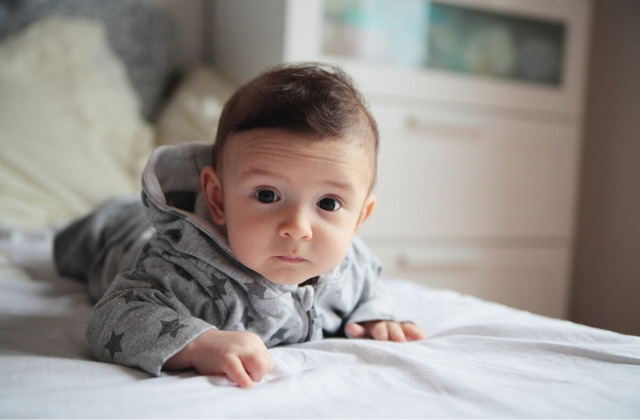Rashes are common in newborn babies. A neck rash is one of the various dermatological skin problems faced by babies. It isn’t noticeable sometimes because it stays hidden within the skinfolds. A neck rash isn’t a matter of grave concern; yet immediate care is warranted, keeping the fragile skin texture of the babies in mind. In this article, we will discuss neck rash in infants, its causes, symptoms, and preventive steps.
In this article:
What Causes Drool Rash?
Home Remedies for Neck Rash in Infants
Prevention of Neck Rash in Infants
Tips for Concerned Parents
Things Every Parent Should Know About Neck Rash in Infants
What Causes Drool Rash?
Neck rash in babies seems like little bumps on the skin. These bumps may appear red, especially in babies with a light complexion. This skin condition can have different causes, but the two major and most important causes are:
Milk Trickle
Babies, while feeding, either from the bottle or from the breast, tends to spit some milk out from the edges of their mouth. This trickled milk gets collected within the skin folds of the neck. If not cleaned properly, the trapped moisture creates a humid environment that becomes a tract for microbial infections.
Drool
Drooling is a common developmental feature in babies and becomes apparent at three to six months of age. This drool often travels all the way down from mouth to the skin folds within the neck region. If not cleaned promptly, this moisture collected within the skin folds can cause a rash because of friction and microbial infestation.
Home Remedies for Neck Rash in Infants
As mentioned earlier, most cases of rash in babies tend to disappear on their own within a couple of days. They may not require any treatment. But they will make the baby highly uncomfortable during this period, due to continuous burning and itching sensations. Here are a couple of things you can do to alleviate the discomfort of the baby.
Use Light and Breathable Fabrics
Never use heavy clothes for your baby. Always search for lightweight and breathable fabric like cotton. On a hot summer day, you’ll dress up your baby in a diaper and cotton top. Never wash your baby’s clothes using strong bleach and detergent, as they may cause skin irritation and cause rashes.
Apply Skin Creams and Lotions
Talk to the doctor before using any skin cream and lotion on your baby, especially younger than six months of age to rule out any possible allergens. For extra caution, you’ll also do a skin test by applying the cream on the baby’s elbow first. Wait and check for any symptoms. If there are no symptoms, then only use the cream on the affected area.
Cold Compress
You can try employing a cold compress on the affected region to soothe the skin inflammation. Take a bathtub of ice-cold water and soak a clean washcloth. Apply this to the area affected by the rash for 5-10 minutes. Once done, pat the area dry.
Maintain Skin Hygiene
If you follow regular bathing and good hygiene practice for your baby, you’ll be ready to prevent these skin rashes.
Use Boiled or Distilled Water
Remember to use boiled or distilled water to wash your baby. This will make sure that the washing water doesn’t contain any harmful microbes that may otherwise harm.
Massage with Coconut Oil
You can also try massaging your baby with coconut oil twice each day for relief from symptoms. Due to its emollient and anti-microbial properties, coconut oil may fit as a preventive skincare product for your baby.
Prevention of Neck Rash in Infants
- Bathe your baby regularly and maintain a decent hygiene practice.
- Select the right fabrics for your baby. Avoid rough fabrics, woolen clothes, and blankets. These aren’t recommended for babies as they have a sensitive skin type.
- Dry the neck region after bathing your baby, and after every feed.
- Try to keep your baby in a cool and well-aired room as excessive heat causes perspiration within the skin folds and results in skin rashes.
- During winters, when woolens cannot be avoided, use the ones that have a wide neck. Make the baby wear a cotton shirt collars underneath the woolens so that wool doesn’t touch the skin.
Tips for Concerned Parents
However, if there’s an underlying health condition related to rash, then you’ll also notice the subsequent symptoms:
- Fever
- Areas that look wet, oozing, or red
- A rash that’s worse in the skin creases
- Pus-filled or fluid-filled blisters
- significant scratching
- inconsolable crying
Remember that you just know your baby better than others. If you notice any rash that worries you, don’t hesitate to call a pediatrician for further consultation.
